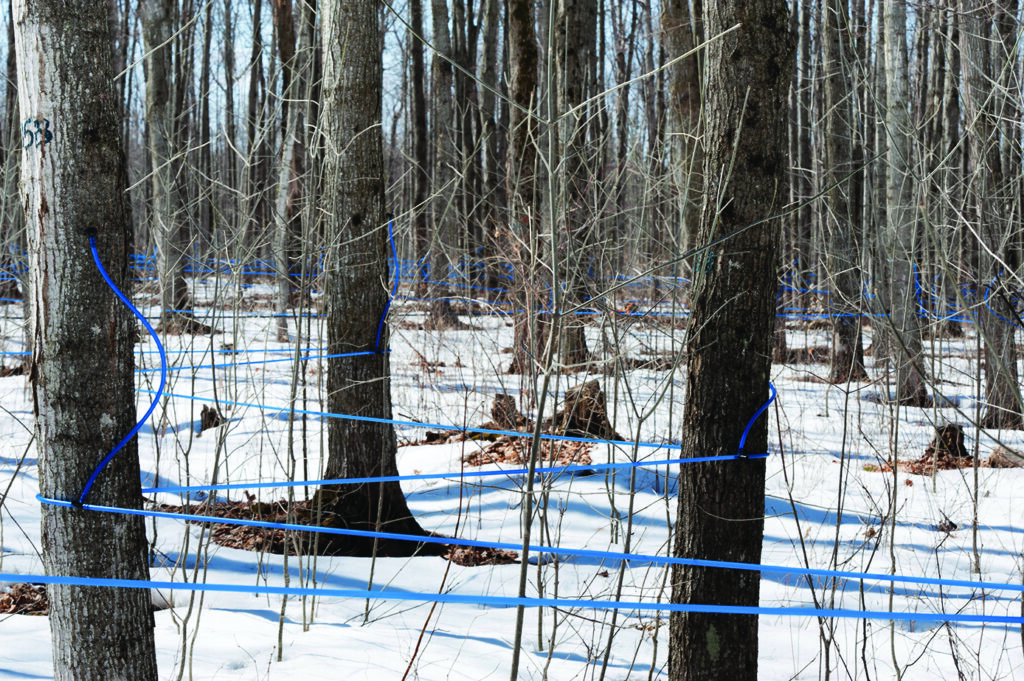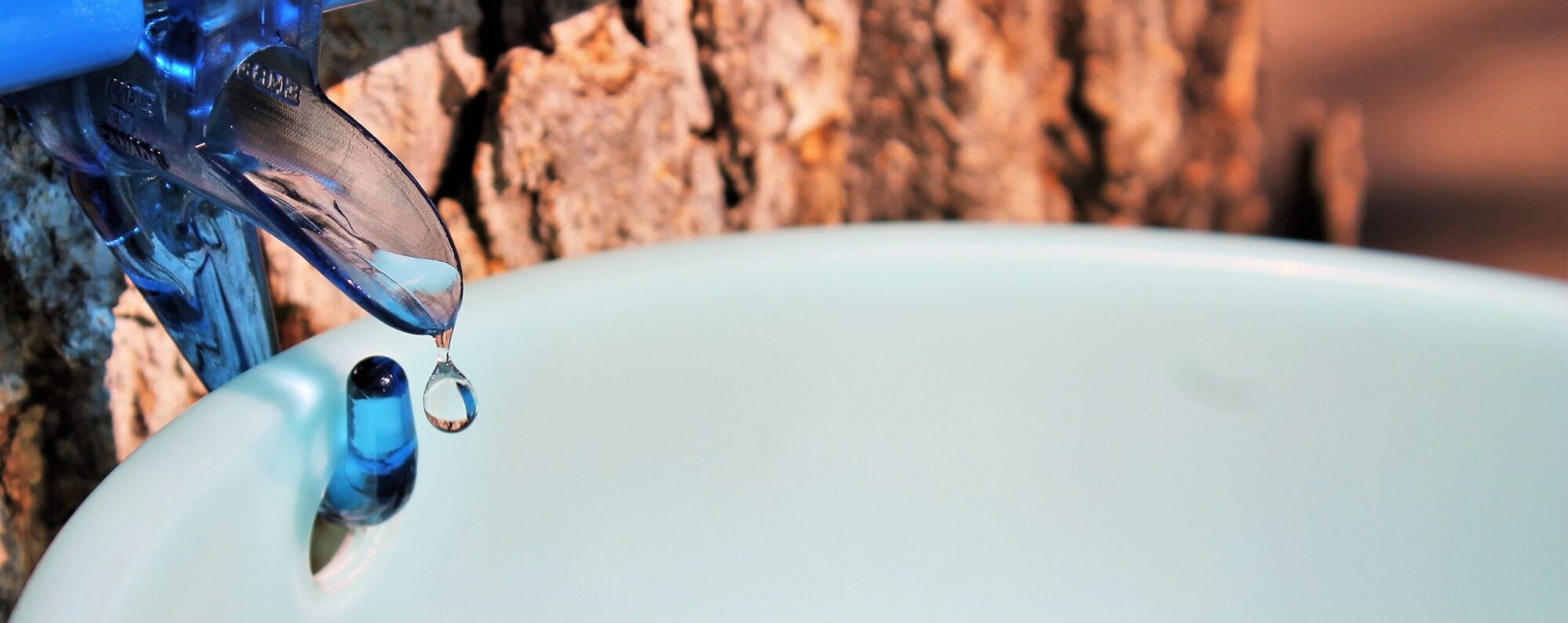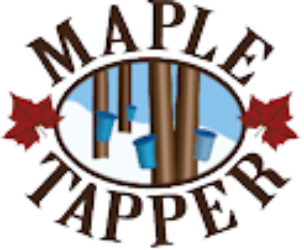
After a few seasons of sloshing buckets around the woods, every sugarmaker starts to think about connecting all these lines into one main bucket. Wouldn’t that be a huge timesaver? That’s why tubing systems are becoming the first choice of most expert sugarmakers and this article will give you a mini-guide on using droplines, mainlines, and large storage tanks (also called an Aerial Tubing System). If you’re serious about implementing one of these systems, we highly recommend visiting one of the helpful Extension Service sites listed at the end of this article. These really smart folks have done the research and offer detailed instructions for setting up, maintaining, and getting the most out an aerial tubing system. Don’t forget to check with your local Extension Service, too, or stop by another sugarmaker in your area and ask questions. Most folks love to show off their operation!
Order 50′ and 500′ coils of BPA-free, food-grade tubing here. Easily connects to our regular tubes.
Typical Maple Tapping Dropline System Parts
(You can create a smaller version with three or four trees that would use droplines connected to a larger line that ends at a central bucket.)
Standard spiles (to go in the tree)
Droplines – tubing that connects to the spiles and runs to the lateral lines
Laterals tubing – this part of the system connects multiple trees to the mainline (Penn State recommends no more than 10 trees per lateral). The laterals are stretched from tree to tree to create a tight structure and then connected to each dropline through a special tee connector.
Mainline (often called conduit) – typically larger than the tubing because it will carry sap from multiple trees. Laterals feed sap into the mainline which runs through the sugarbush to the storage tank.
Large storage tank – placed at the end of the mainlines to collect all the sap. Preferably this tank is near your sugar shack where it can be further run into your filtering and cooking areas.
Most Important Rule of Using a Multiple Line System: The overall flow of these systems must be downhill because you are creating a gravity system to pull the sap through long stretches of tubing. If parts of the tubing sag or dip, sap flow will decrease. Sags in the line also can cause bacterial growth if sap is left sitting in the tubing. Many large scale producers also incorporate a vacuum system to keep sap flowing.
After you’ve set up your system, don’t be afraid to tweak it. Maybe a line needs to be shortened a bit or maybe you need to set up a collection bucket midway through your planned route. As with all sugarmaking, trial and error creates the best product!
It’s also important to use food-grade tubing and containers at all points in collection. This ensures the taste and quality of your finished syrup. And, yes, you can freeze maple sap!
Find More Info Here
Penn State Extension Services at: www.extension.psu.edu/natural-resources/forests
University of Vermont at: www.uvm.edu/extension/maple
Cornell University Cooperative Extension at: www.maple.dnr.cornell.edu
University of Minnesota Extension Service at: www.extension.umn.edu
University of Maine at: www.umaine.edu

